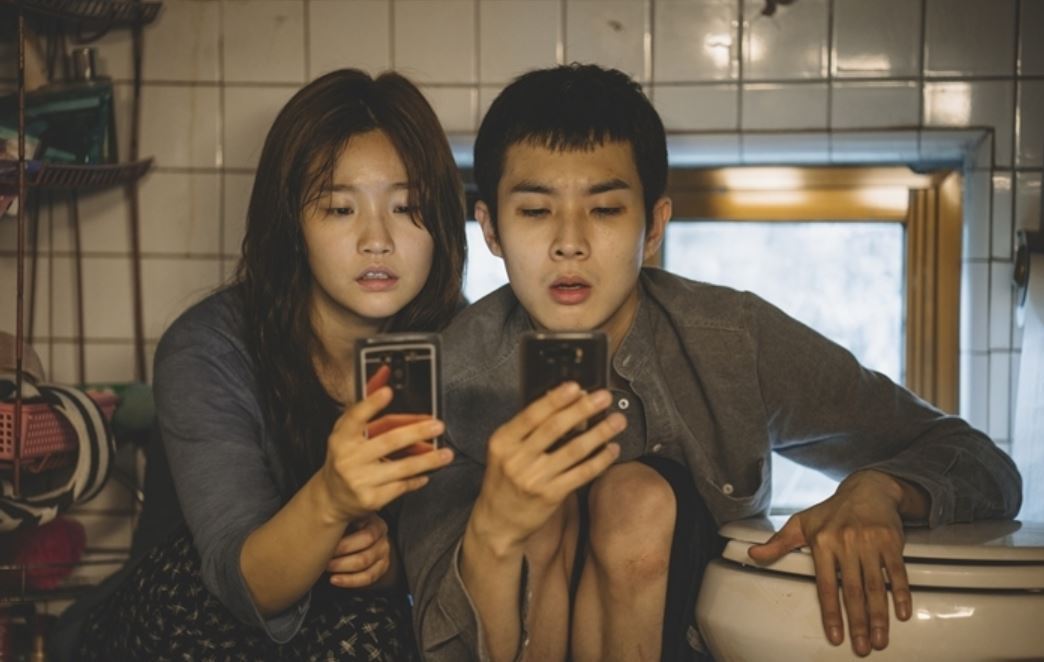 |
A movie still of "Parasite" depicting Park So-dam (left) and Choi Woo-sik as family members living in a semibasement apartment in Seoul. (CJ ENM) |
The average rent for semibasement apartments in Seoul on two-year “jeonse” leases topped a record 100 million won ($85,900) this year, suggesting low-income households in the city are facing heavier financial burdens, data showed Wednesday.
Jeonse, a two-year housing lease that requires a lump sum deposit, for semibasement apartments measuring 60 square meters or smaller in the capital city came in at an average of 104.4 million won as of end-August, according to the Land Ministry data compiled by real estate information tracker Station 3.
The average cost has been gradually on the rise, from 78 million won in 2017 to 88.9 million won in 2019 and 95 million won in 2020. The Ministry of Land, Infrastructure and Transport began compiling the relevant data from 2011.
In the affluent southern districts of Seocho and Gangnam, the average price topped 170 million won, followed by central Jongno-gu’s 160 million won, driving up the average across one of Asia’s most expensive cities. The average cost was the lowest in the northern Dobong-gu at 70.9 million won.
The flats, dubbed “banjiha” in Korean, are often built half above street level in low-rise apartment buildings and considered a means of affordable housing for low-income households.
Dwellers in the space -- often stigmatized as being poor -- tend to experience low level of sunlight emanating through barred windows. Tenants there are often exposed to pollutants from the ground level, humidity and mold, and pedestrians outside can easily peek in.
Such apartments were thrust into the media spotlight after the Oscar-winning film “Parasite” depicted a family’s impoverished life inside a cramped semibasement flat.
Jeonse leases, in which the security deposit is refunded to tenants after two years, are preferred among young people and low-income households because the monthly cost of borrowing money for the deposit tends to be lower than paying monthly rent, known as “wolse” in Korea.
The latest data, however, indicates that the underground space may no longer be an affordable option for many.
The phenomenon, which stems from a housing crunch in Seoul, is exacerbated by the low-interest rate environment that spurred homebuying, Station 3 said in its report.
This comes against a backdrop of dwindling jeonse contracts and rising jeonse costs despite the introduction of the House Lease Protection Act in July 2020. The law is designed to guarantee another two-year extension to tenants’ leasing contract and cap the increase of jeonse costs. According to the Korea Real Estate Board data, the jeonse cost for apartments as of end-June rose 10.3 percent from the previous year.
“The underground residential space, along with rooftop flats, are considered poor living conditions,” noted Station 3, known for operating the real estate listing app DaBang.
“The recent increase in housing price and cost of rent appears to have contributed to a surge in jeonse prices for the low-quality semibasement housing space.”
By Son Ji-hyoung (
consnow@heraldcorp.com)







![[Weekender] Korea's traditional sauce culture gains global recognition](http://res.heraldm.com/phpwas/restmb_idxmake.php?idx=644&simg=/content/image/2024/11/21/20241121050153_0.jpg)
